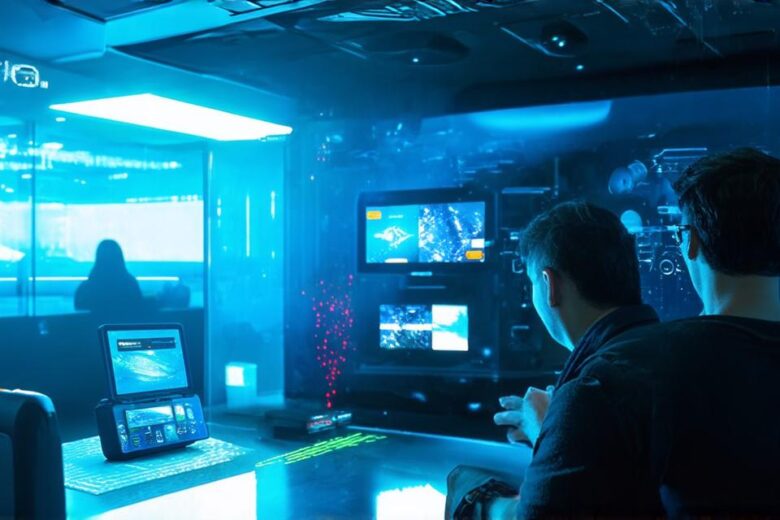Augmented reality (AR) is a technology that overlays digital information on top of the real world. It has gained widespread popularity in recent years, with countless applications across various industries, including gaming, education, and healthcare.
1. Understanding the basics of augmented reality
Before diving into the technical aspects of creating an AR experience, it’s essential to understand what AR is and how it works. AR involves using a device or app that captures the real world around you and then superimposes digital information on top of it. This can include images, animations, and even interactive objects that respond to your movements and actions.

To create an AR experience, you’ll need to use a combination of hardware and software tools. The hardware includes the device or platform you’ll be using to deliver the experience (e.g., smartphones, tablets, smart glasses) and any sensors or cameras required to capture the real world. The software includes AR development tools, content creation software, and programming languages.
1. Choose your target platform
The first step in creating an AR experience is choosing the target platform. This will depend on the device or app you’re using to deliver the experience. Common platforms include smartphones, tablets, and smart glasses. Each platform has its own set of requirements and capabilities, so it’s essential to choose one that fits your needs and budget.
1. Select an AR development toolkit
Once you’ve chosen your target platform, the next step is to select an AR development toolkit. There are several options available, including Unity, Unreal Engine, Vuforia, and ARKit. Each toolkit has its own set of features and capabilities, so it’s essential to choose one that fits your needs and skill level.
1. Design the user interface
The user interface (UI) is a critical component of any AR experience. It should be intuitive and easy to use, with clear instructions and feedback for the user. The UI can include buttons, sliders, and other interactive elements that allow the user to control the experience. It’s essential to design the UI with the target platform in mind, ensuring it’s optimized for the device’s screen size and resolution.
1. Create the 3D content
The 3D content is the digital information that will be overlaid on top of the real world. This can include images, animations, and interactive objects. Creating 3D content requires specialized software, such as Blender or Maya. It’s essential to ensure the 3D content is optimized for AR, with a focus on performance and usability.
1. Develop the AR experience
Once you’ve designed the UI and created the 3D content, it’s time to develop the AR experience using your chosen development toolkit. This involves coding the experience, integrating the 3D content, and testing the experience on the target platform. It’s essential to test the experience thoroughly, ensuring it works as intended and is optimized for performance.
1. Publish and distribute the AR experience
The final step in creating an AR experience is publishing and distributing it. This involves uploading the experience to a app store or marketplace and making it available for users to download and use. It’s essential to promote the experience through social media, email marketing, and other channels to ensure it reaches your target audience.
Creating an augmented reality experience can be a complex and challenging process, but with the right tools and skills, it can be a fun and rewarding experience. By following these steps and best practices, you can create engaging and immersive AR experiences that delight and inspire users.
